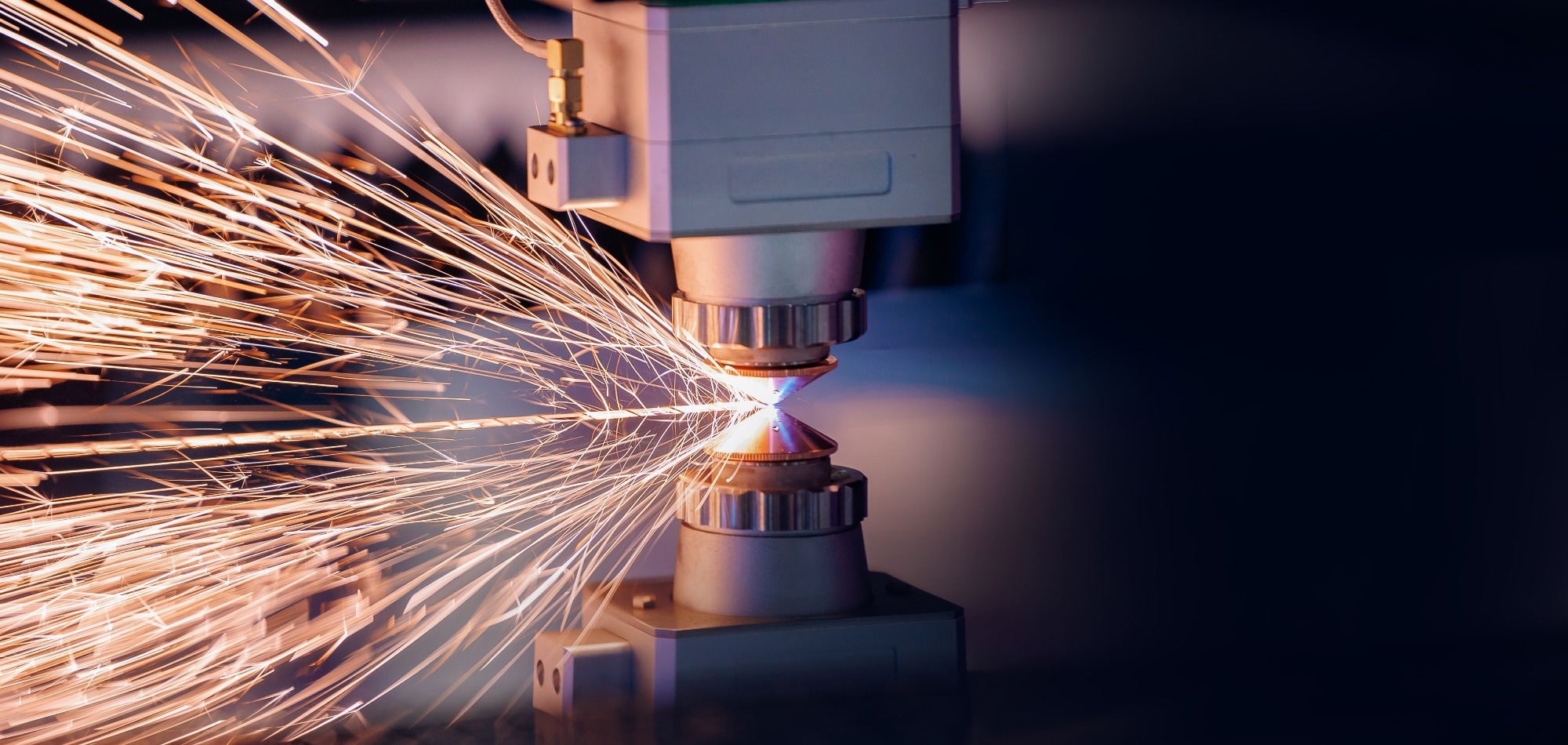A new review in Optics and Laser Technology reveals how advances in beam shaping, in-situ monitoring, and digital modelling are transforming thermoset composite fabrication, making laser processing faster, cleaner, and more precise than ever before.

Image Credit: Parilov/Shutterstock.com
Background
Thermoset composites, valued for their exceptional strength-to-weight ratios and durability, play a key role in aerospace, automotive, and civil engineering applications. However, traditional fabrication methods like thermal curing and mechanical processing often fall short when it comes to precision, processing speed, and scalability.
Laser-assisted manufacturing offers a compelling alternative by using advanced optical systems to deliver localized energy with high precision. This approach allows for tighter control over how composite materials are processed.
The core of this technique lies in the optics, specifically the characteristics of the laser beam, such as wavelength, coherence, pulse duration, and focal point. These parameters directly influence how the laser interacts with the thermoset matrix and reinforcing fibers. As highlighted in the paper, carefully tuning these optical variables ensures accurate energy delivery, reduces the risk of thermal damage, and boosts processing reliability.
Additionally, incorporating optical diagnostics, like real-time imaging, thermal imaging, and spectroscopy, improves process monitoring and quality assurance, helping manufacturers maintain consistent, high-quality results.
Download the PDF of the page
Studies Highlighted in This Review
The paper surveys both foundational and recent studies that shed light on the optics-driven mechanisms involved in laser processing of thermoset composites. One notable example focuses on ultraviolet (UV) laser irradiation, which takes advantage of the high absorption coefficients of certain resin components at UV wavelengths. This allows for surface micro-patterning with minimal thermal damage, highlighting how wavelength selection directly affects processing precision.
Another key area of focus is laser ablation using ultrashort pulse lasers, specifically in the picosecond and femtosecond range. These pulses deliver concentrated energy in extremely short bursts, significantly reducing heat-affected zones and enabling highly precise material removal. In this context, pulse duration is critical, as it influences the ablation threshold, plasma formation, and material ejection, underscoring the importance of pulse shaping in process control.
The review also highlights the use of optical diagnostics, such as time-resolved emission spectroscopy, to study plasma plumes generated during laser-material interaction. These tools offer valuable insights into ablation mechanisms and support the fine-tuning of parameters like wavelength, fluence, and pulse timing to enhance precision and repeatability.
In addition, several studies demonstrate the use of laser-induced photopolymerization, where targeted laser exposure initiates localized curing in the resin. This process relies on the photochemical absorption of laser photons, which trigger polymer chain reactions. Here, both the optical wavelength and photon energy play a central role in determining the depth and resolution of the cured features, making optical parameter design essential for achieving complex geometries.
Finally, the review covers recent advances in adaptive optics, including deformable mirrors and spatial light modulators, which dynamically adjust the laser beam’s phase and amplitude. These systems help correct optical aberrations, improve beam focus within layered composite materials, and support intricate, multi-layer processing strategies.
Discussion
The discussion highlights how optical parameters fundamentally shape the effectiveness and quality of laser processing for thermoset composites. Wavelength selection plays a central role: ultraviolet lasers offer high spatial resolution due to shallow penetration, making them ideal for surface-level precision work. In contrast, mid-infrared (mid-IR) lasers provide deeper absorption within polymer matrices, making them better suited for bulk heating applications.
Pulse duration is another key variable. Shorter pulses reduce heat diffusion, enabling non-thermal ablation and photochemical modifications, advantages when working with intricate or heat-sensitive features.
Focusing and beam shaping also have a major impact on how energy is delivered. Tightly focused beams increase local energy density, allowing for finer detail, but demand careful optical alignment and aberration correction. Wider beams, on the other hand, are better for uniform coverage across larger areas, though they may compromise resolution. The review points to the importance of advanced optical components, such as adaptive optics, which dynamically adjust for distortions caused by heterogeneous composite structures, helping maintain both precision and uniformity.
Real-time optical diagnostics are equally crucial for process control. Techniques like spectroscopy and high-speed imaging capture immediate feedback on plasma emissions, vapor plumes, and photon output. These signals can be linked directly to processing parameters, enabling dynamic optimization of the laser system. This not only reduces defects and improves repeatability but also deepens our understanding of underlying mechanisms such as photon energy transfer and plasma formation, knowledge that’s essential for pushing the boundaries of laser processing technology.
Conclusion
The review concludes by emphasizing that optical technologies are central to advancing laser-assisted manufacturing of thermoset composites. Careful selection and control of key optical parameters, such as laser wavelength, pulse duration, focus, and beam shape, can significantly enhance processing precision, surface quality, and structural integrity. The use of optical diagnostics, including spectroscopic and imaging-based sensors, adds another layer of control by enabling real-time monitoring and feedback, reducing defects, and supporting the fabrication of complex geometries.
Emerging optical innovations, such as adaptive optics, phase modulation techniques, and high-speed detection systems, are also poised to address current challenges like heat-affected zones, inconsistent curing, and variability in process outcomes. These advancements are opening the door to more refined, automated, and scalable manufacturing methods that offer high resolution with minimal thermal impact.
The authors call for continued interdisciplinary collaboration across optics, materials science, and process engineering. Such efforts are essential for deepening our understanding of light-matter interactions, refining optical system design, and translating lab-scale breakthroughs into viable industrial solutions. Ultimately, the future of laser-based processing for thermoset composites will depend on how effectively optical technologies are harnessed to deliver precision, efficiency, and sustainability.
Journal Reference
Nabavi S. F., & Dalir H. (2025). Future trends in laser manufacturing of thermoset composites. Optics and Laser Technology, 181, 111713. DOI: 10.1016/j.optlastec.2024.111713, https://www.sciencedirect.com/science/article/pii/S003039922401171X